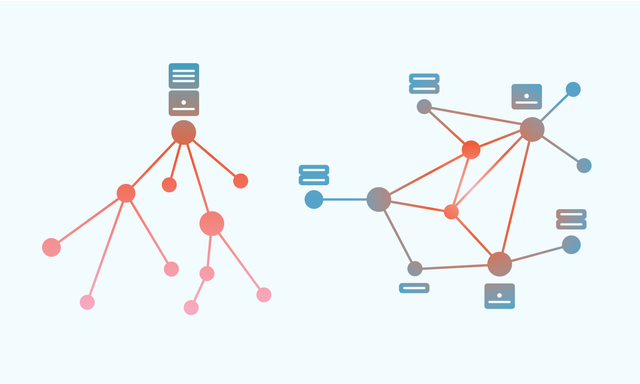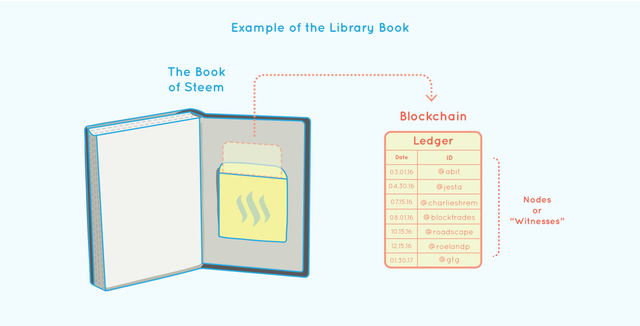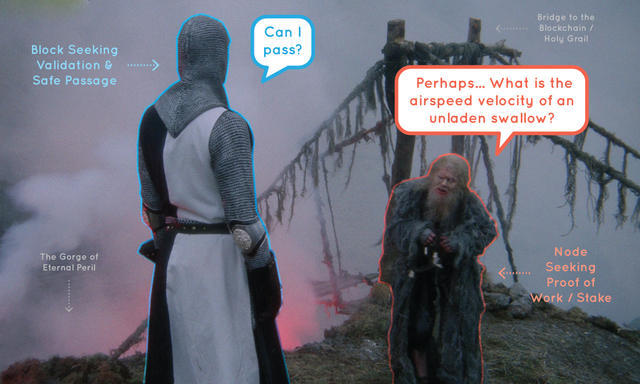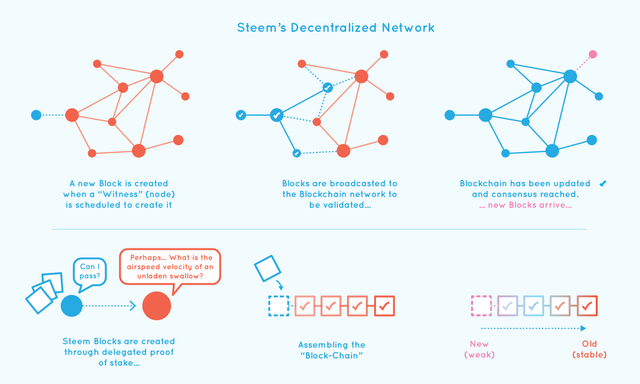Anatomy Of The Blockchain
The Blockchain Breakdown :
Blockchain is a technology - A novel infrastructure for data and the intelligent decision-making backbone for currencies like Steem and Bitcoin. Blockchain has come under a recent spotlight with the rise in Bitcoin and a growing global need for managing and securing complex data. Instead of having a central server where all of your information is held and must pass through, Blockchain allows for multiple “centers” to distribute and validate incoming information simultaneously. This is a big deal for a number of reasons - for one - data is inherently “safer” when held on a Blockchain. In the event of a hack - data contained on a single server can easily be discovered and overwhelmed. If that same data were to be held within a Blockchain network, you simply have too many center points to weaken and access simultaneously. This new infrastructure also allows for greater efficiency in processing and validating data entering the system. A community-model of data management is an entirely new and progressive technology that has tremendous potential to grow beyond the cryptocurrency space.
Anatomy of a Block
So what exactly is Blockchain and what does it look like? To better understand how this smart network grows, first we need to know how it’s put together. A typical “Block” contains four essential pieces of information:
- Identification : Or a “Hash”
- Timeline : The Hash number from the previous block, organized chronologically
- Transactions : All transfers between a sender and receiver
- Public Key : Identifies a sender and receiver
Joining the Chain
The “Chain” itself is like a very intelligent ledger (or timeline.) For example, imagine a very popular library book and the little yellow piece of paper tucked behind the cover. This standardized paper is a recorded list of people who have borrowed the book in the past. It’s a ledger that records the due date for the book to be returned alongside the name of the person who checked the book out from the library.
Now imagine that this popular book becomes digitized and publicly available on the internet. The manually stamped yellow paper ledger would have to adapt! In the example of Blockchain; this new digitized list of readers would have a real-time record of everyone who opened the book, shared the book, requested to edit the book and even add new chapters to the book. The ledger would populate automatically and create a comprehensive timeline of events that would be publicly visible, efficient and secure.
A Secure & Decentralized Network
Building on the library book example... A digitized library book that can be read by multiple readers simultaneously is, in many respects, “decentralized.” There is no central Library checkout counter to validate your request for access to the book. Instead, a network of readers and writers are able (as a community) to grant you permission.
In the realm of Blockchain, these book-savvy guardians are called “nodes.” In Steem's Blockchain - a new “block” is allowed to be added into the chain when a witness is scheduled to create it. As a measure of security and integrity to the chain, the block must propagate successfully through the network of nodes in order to finally reach consensus. This rigorous process is what’s known as a establishing a proof of stake.
This problem solving / algorithm-rich complex process of establishing proof can be understood through the example of Monty Python and The Holy Grail...
Once a newly introduced block is propagated through the entire Blockchain, consensus is reached. As new blocks are added through the same consensus-driven process - the chain becomes stronger and increasingly stable.
Better, Faster, Stronger
The Blockchain network strengthens as additional nodes are integrated. Data becomes more distributed and efficient among those engaged with it. This decentralized model is a new structurally competent architecture of data that has massive potential. What makes Bitcoin and Steem (among a family of others) so exciting is that this technology is just beginning to break into a broader audience. Financial institutions are among the first to realize that this technology could drastically cut down on digital smart-contract times, automating transactions, lowering security costs among many other benefits.
In a global economy that relies on a growing brain of data everyday; Blockchain is due to be one of the most disruptive technologies in the internet era.
Disclaimer : I am a Steemian with an art and design background curiously attempting to learn more about Blockchain. These diagrams and definitions were made through my own research in an effort to better understand the technology. If you have any questions or clarity to provide please don’t hesitate in the comment section below! Thank you in advance for your patience and constructive feedback.






Very clear for non-crypto-people like me! Thanks for putting all of this together!
Awesome, that's really great to hear! Thanks @lemouth!
Good rundown. I'm getting a bit closer to understanding how this mess works. Thanks for your efforts!
Thanks to your article i'm starting to understand the blockchain technology a bit better :) Great vulgarization. Maybe you could do a post about what is the difference between the Blockchain and the technology which was used so far?
That's a great idea, thanks @herverisson! Digging through some of the existing language on Blockchain can be a daunting task, hopefully I have some of the basics smoothed out here. In the future I'll definitely work on a comparison between what's commonly in use today and how this tech is pursuing something different. As professionals from other disciplines continue to get involved in Blockchain I'm sure we'll see better and better visuals/descriptions for how it works. Anyway, thanks again!
Looking forward to reading more! Keep it up!
This post has been ranked within the top 80 most undervalued posts in the second half of Jan 29. We estimate that this post is undervalued by $5.71 as compared to a scenario in which every voter had an equal say.
See the full rankings and details in The Daily Tribune: Jan 29 - Part II. You can also read about some of our methodology, data analysis and technical details in our initial post.
If you are the author and would prefer not to receive these comments, simply reply "Stop" to this comment.